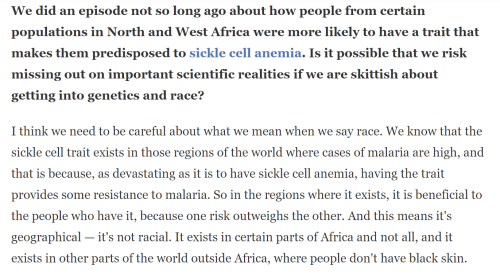These Pictures Show PAS (purple/pink) And GMS (brown/blue) Staining Of A Lymph Node Biopsy From A Canine








These pictures show PAS (purple/pink) and GMS (brown/blue) staining of a lymph node biopsy from a canine patient with lymphadenopathy and weight loss. Histology was suggestive of likely a fungal organism (bright pink in the PAS stain and dark brown/black in the GMS stain), however a mixed infection with an algal species could not be definitively ruled out without microbiology.
Our microbiologist cultured an Aspergillus species from this dog, and is in the process of ruling out any other possibilities.
What's especially cool is in one of the PAS pictures, you can see an organism trapped within an actively dividing macrophage!
More Posts from Mikrobiotch and Others

plasmodial slime mold consuming a Trametes fungus by Michael Harz
Microbiology!

[ID: a banner made of emojis of microscopes, bubbling flasks, and DNA, with different bacteria emojis from a combo emoji scattered between them. /End ID]


by TheMicrobiology09 on yt



This NPR interview with with Angela Saini about how race science never really left the global scientific consciousness is super interesting! I’m gonna read her book!

An innovative artificial intelligence program called CLEAN (contrastive learning–enabled enzyme annotation) has the ability to predict enzyme activities based on their amino acid sequences, even if the enzymes are unfamiliar or inadequately understood. The researchers have reported that CLEAN has surpassed the most advanced tools in terms of precision, consistency, and sensitivity. However, a deeper understanding of enzymes and their roles would be beneficial in a number of disciplines, including genetics, chemistry, pharmaceuticals, medicine, and industrial materials.
The scientists are using the protein language to forecast their performance, similar to how ChatGPT uses written language data to generate predictive phrases. Almost all scientists desire to comprehend the purpose of a protein as soon as they encounter a new protein sequence. Furthermore, this tool will aid researchers in promptly recognizing the suitable enzymes needed to manufacture chemicals and materials for various applications, be it in biology, medicine, or industry.
Continue Reading
Cell Junctions
– there are three types of junctions: – tight – desmosome – gap
– tight junctions seal epithelial cells to one another
– desmosomes have “spotted” seals, where keratin filaments anchor the two cells
– gap junctions have channels to allow the passage of ions and molecules

Coelastrum, a microalgae.

Microglossum viride
-
 moonangelus liked this · 9 months ago
moonangelus liked this · 9 months ago -
 smartheart liked this · 11 months ago
smartheart liked this · 11 months ago -
 poolboyatthevampiremansionx liked this · 11 months ago
poolboyatthevampiremansionx liked this · 11 months ago -
 c-perfringens liked this · 11 months ago
c-perfringens liked this · 11 months ago -
 autophintrovert liked this · 11 months ago
autophintrovert liked this · 11 months ago -
 sabledean liked this · 1 year ago
sabledean liked this · 1 year ago -
 lilacerull0 liked this · 1 year ago
lilacerull0 liked this · 1 year ago -
 autismspectrometer reblogged this · 1 year ago
autismspectrometer reblogged this · 1 year ago -
 pixiestixss liked this · 1 year ago
pixiestixss liked this · 1 year ago -
 just-joss liked this · 1 year ago
just-joss liked this · 1 year ago -
 oriun reblogged this · 1 year ago
oriun reblogged this · 1 year ago -
 smith86n liked this · 1 year ago
smith86n liked this · 1 year ago -
 xchxsex liked this · 1 year ago
xchxsex liked this · 1 year ago -
 snorfkle liked this · 1 year ago
snorfkle liked this · 1 year ago -
 jenninova liked this · 1 year ago
jenninova liked this · 1 year ago -
 steh-lar-uh-nuhs liked this · 1 year ago
steh-lar-uh-nuhs liked this · 1 year ago -
 isabellalovelyyxx liked this · 1 year ago
isabellalovelyyxx liked this · 1 year ago -
 rockhasnoclue247 reblogged this · 1 year ago
rockhasnoclue247 reblogged this · 1 year ago -
 rockhasnoclue247 liked this · 1 year ago
rockhasnoclue247 liked this · 1 year ago -
 mascarponecupcake liked this · 1 year ago
mascarponecupcake liked this · 1 year ago -
 skymantle liked this · 1 year ago
skymantle liked this · 1 year ago -
 donut1642 liked this · 1 year ago
donut1642 liked this · 1 year ago -
 eltingvilleocxcanon liked this · 1 year ago
eltingvilleocxcanon liked this · 1 year ago -
 bjarkob2620 liked this · 1 year ago
bjarkob2620 liked this · 1 year ago -
 cyeayt liked this · 1 year ago
cyeayt liked this · 1 year ago -
 notyobeeswax liked this · 1 year ago
notyobeeswax liked this · 1 year ago -
 behappybeusefulbekind liked this · 1 year ago
behappybeusefulbekind liked this · 1 year ago -
 wastingtimechasingme reblogged this · 1 year ago
wastingtimechasingme reblogged this · 1 year ago -
 uhhhhhguesswhat liked this · 1 year ago
uhhhhhguesswhat liked this · 1 year ago -
 darkwinnerlampzonk liked this · 1 year ago
darkwinnerlampzonk liked this · 1 year ago -
 lost-in-microbiome reblogged this · 1 year ago
lost-in-microbiome reblogged this · 1 year ago -
 desi-ambivert-nerd liked this · 1 year ago
desi-ambivert-nerd liked this · 1 year ago -
 decaffeinatedobjecttyrant liked this · 1 year ago
decaffeinatedobjecttyrant liked this · 1 year ago -
 radiumfox liked this · 1 year ago
radiumfox liked this · 1 year ago -
 caketastrophe liked this · 1 year ago
caketastrophe liked this · 1 year ago -
 nubby66 reblogged this · 1 year ago
nubby66 reblogged this · 1 year ago -
 nubby66 liked this · 1 year ago
nubby66 liked this · 1 year ago -
 elchicoquehipersuda liked this · 1 year ago
elchicoquehipersuda liked this · 1 year ago -
 redcandieddust reblogged this · 1 year ago
redcandieddust reblogged this · 1 year ago -
 redcandieddust liked this · 1 year ago
redcandieddust liked this · 1 year ago -
 pozeracz reblogged this · 1 year ago
pozeracz reblogged this · 1 year ago -
 pozeracz liked this · 1 year ago
pozeracz liked this · 1 year ago -
 doodooism liked this · 1 year ago
doodooism liked this · 1 year ago -
 finalgirlmoment liked this · 1 year ago
finalgirlmoment liked this · 1 year ago -
 moshroom liked this · 1 year ago
moshroom liked this · 1 year ago -
 tsamired liked this · 1 year ago
tsamired liked this · 1 year ago

